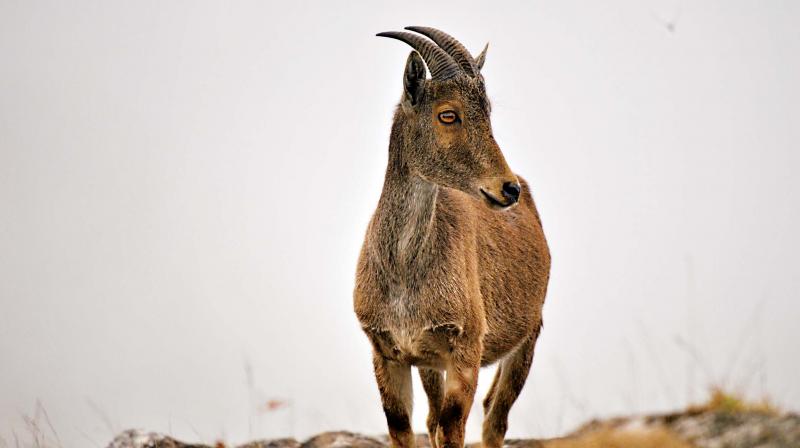Climate change to diminish habitat of the Nilgiri Tahr

Bengaluru: A new study conducted by the researchers of Ashoka Trust for Research in Ecology and the Environment (ATREE) has forecast that most of the existing habitats of the Nilgiri Tahr in the Western Ghats will become unsuitable as global warming intensifies.
The study that looked into two climate scenarios over a course of three time frames (2030s (2021–2050), 2050s (2040–2069) and 2080s (2070–2099)) observed a drastic loss of habitat in all future time scenarios. The study looked at ten Tahr habitats during 2010-2011.
The study authored by R.K. Sony and Sandeep Sen from (ATREE) and co-authored by Sunil Kumar, Monalisa Sen and K.M. Jayahari is first of its kind to use the ecological niche model to predict the species distribution of the Tahr in varying climate scenarios. This model uses the relationship between a species and its habitat to identify potential species distribution.
Nilgiri Tahr is an endangered, hoofed mammal endemic to the Western Ghats. Historically, this animal was found everywhere in the Western Ghats, but currently only 3,000 exist and their habitat is restricted to one tenth of their original range.
The study comes at a significant time as there has been a continuous decline in Tahr populations owing to hunting, conflict with livestock grazing and habitat loss over the years and no study till date has looked into the likely effect of climate change on the Nilgiri Tahr.
The study predicted a maximum habitat loss of 61.2 per cent, 61.4 per cent and 63 per cent for 2030, 2050 and 2080 respectively if there is no fall in level of emissions.
“The present study has to be observed in the backdrop of this identified vulnerability of the species to local extinction. In the absence of data on the movements of these animals between the high-altitude forest grasslands separated by thick forest barriers, the possible impacts on the habitat suitability are increasing the chances of local extinction since the animals may then not be able to move to suitable habitats from the existing ones," said Jayahari, principal investigator of the study.
According to the study the protected areas are expected to experience a drastic habitat loss owing to climate change. While the protected area network within the Western Ghats is suitable for the Nilgiri Tahr in the current scenario, the study predicted that over 60 per cent of this network will become unsuitable due to warming.
In light of the study, R.K. Sony, one of the authors of the study said, “Conservation and management of suitable habitats outside the existing protected area network will be helpful to curb the effect of climate change on Tahr, as well as its associated species.”

